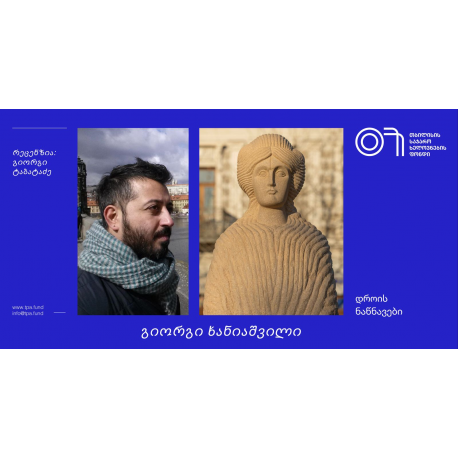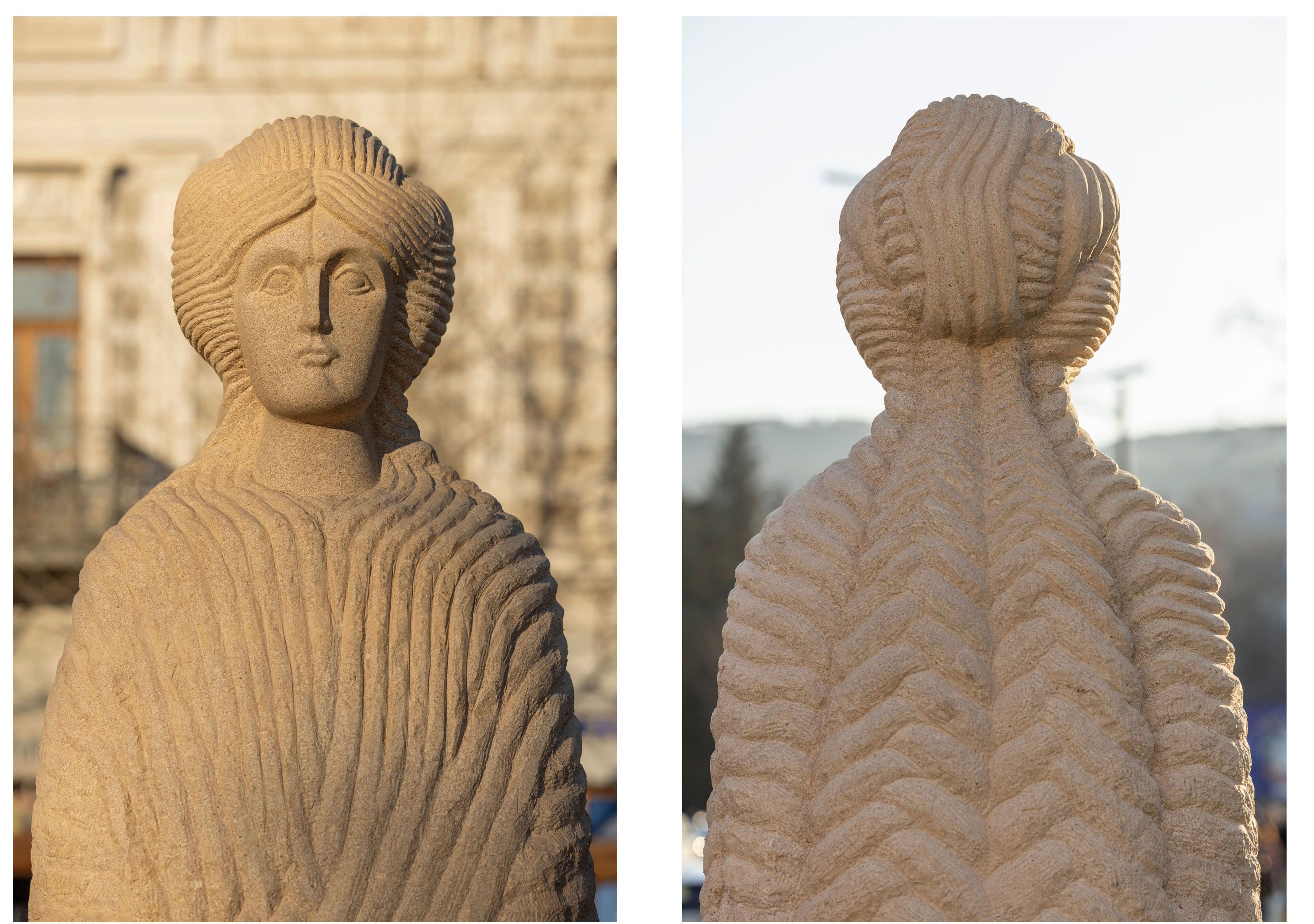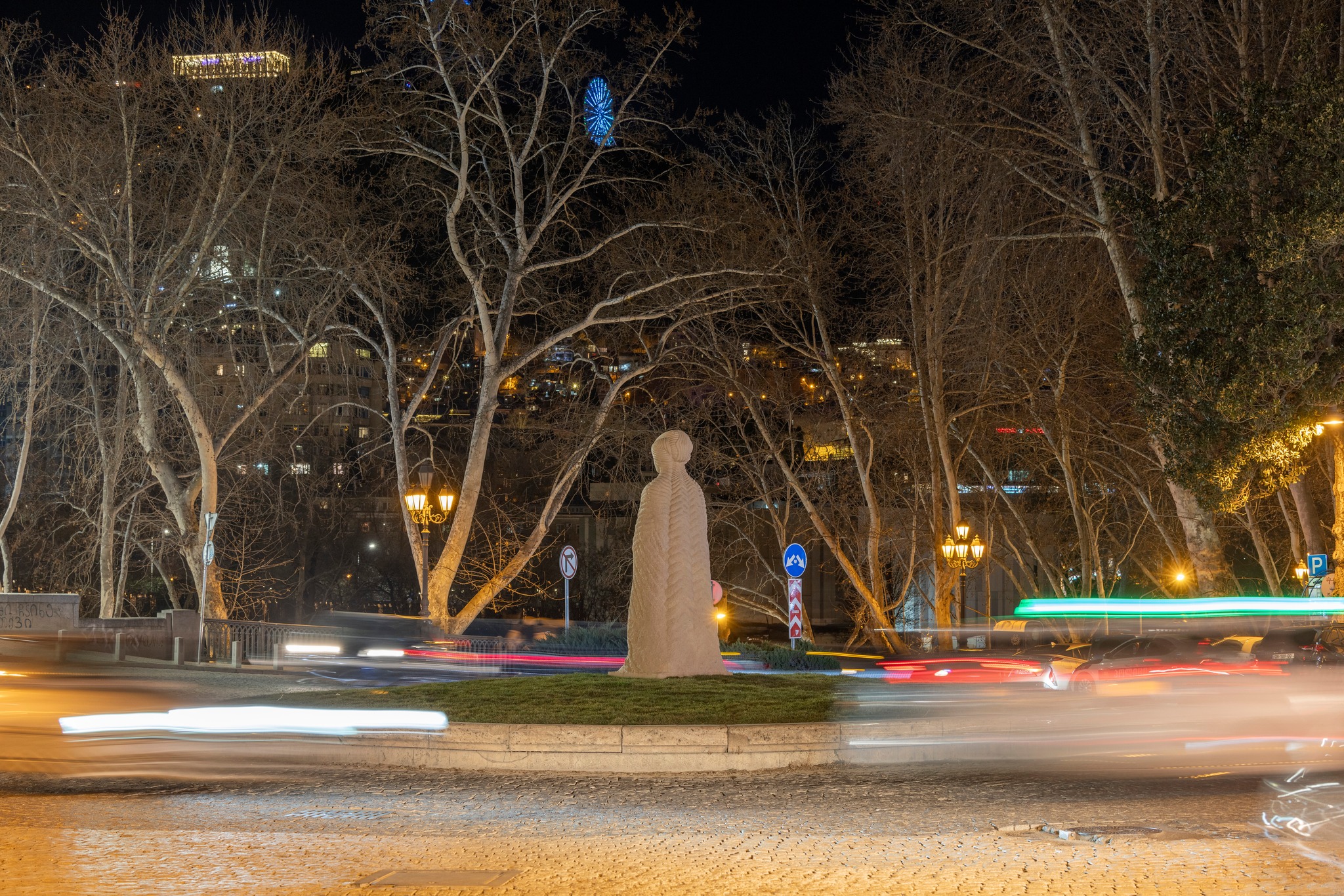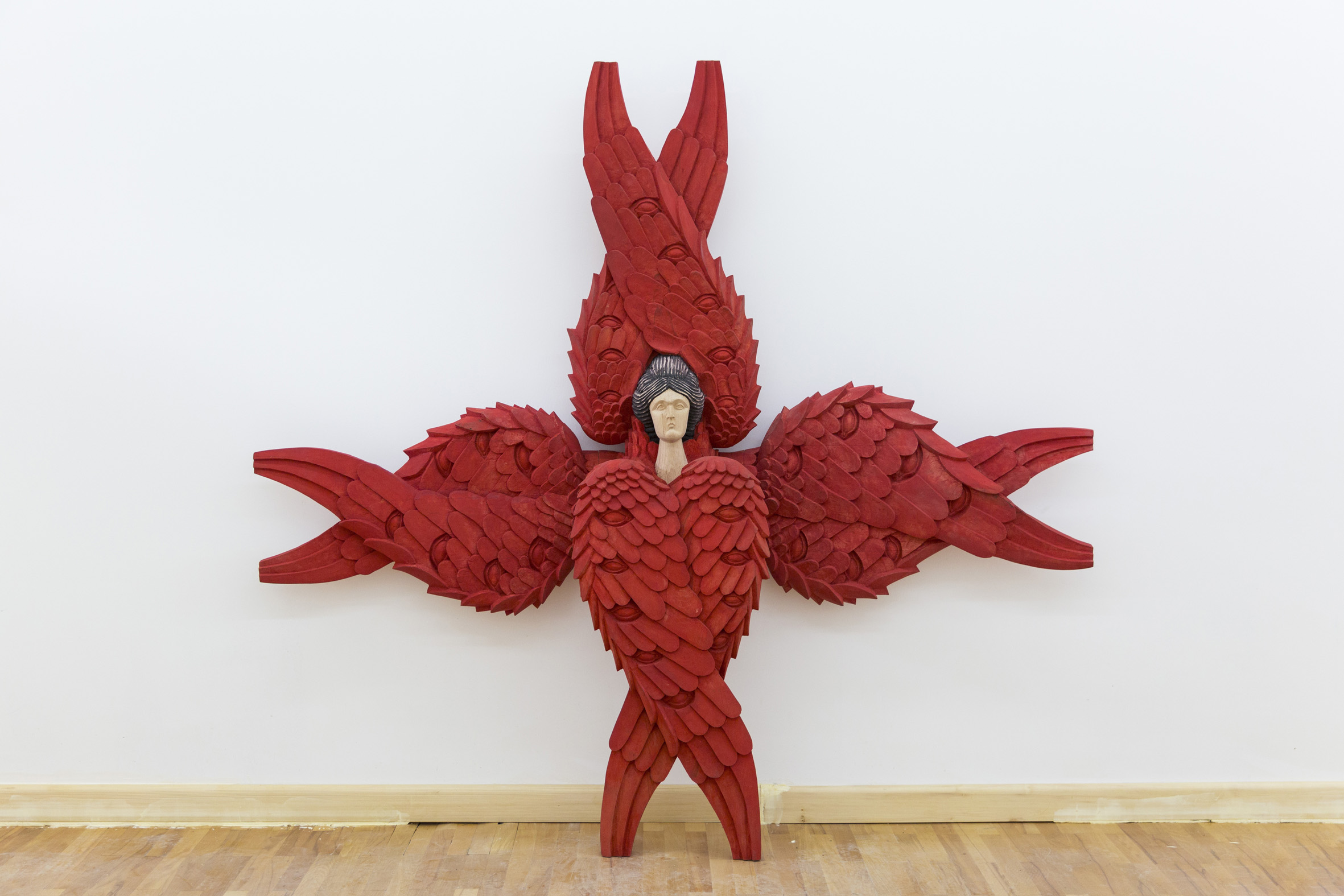 View larger
View larger

George Tabatadze: Giorgi Khaniashvili, Braids of Time
= More info =

Giorgi Khaniashvili, Braids of Time, 2023, Yellow Tuff, 300 x 104 x 104 cm
Photo: Guram Kapanadze
Our encounter with ancient culture started with the myth of Medea. When our paths crossed once again, it was Hellenistic civilization that turned face to face with us through Christianity: a new encounter was tied together and braided with a young woman's hair which took the shape of vine ornaments and covered not only the stone facades but became part of the visual and principal worldview and environment our culture lives in.
Despite the fact, that Georgian culture has always developed itself at the intersection of eastern and western, northern, and southern civilizations our meeting with the ancient world, and especially its Christian part, proved to be of crucial importance. Dialectic relationships shaped our identity, which still defines Georgian art and its image.
 Giorgi Khaniashvili, Braids of Time, 2023, detail
Giorgi Khaniashvili, Braids of Time, 2023, detail
Photo: Guram Kapanadze
Giorgi Khaniashvili's sculpture specifically reflects on these dialectical interrelationships and ultimately operates as a hybrid version of the ancient image where the Hellenistic hair slowly dissolves and next to the feet transforms into the roots of a tree. This is a brief review of Giorgi Khaniashvili's work, which was erected at Saarbrucken Square on February 9 as part of the initiative of the Tbilisi Public Art Fund. I was very fascinated by reading and analyzing its visual codes even though the analytical readings still did not manage to fill all the gaps. Ever since I first laid eyes on this sculpture, I could not stop asking myself, what is the archangel looking at? What is its gaze directed at? Analytical language is no longer useful here and we should apply speculative one which deviates from the format of our brief review. Therefore, I will need to leave it for the next time. Asking the question from such an angle led me to a seemingly simple, but important conclusion: Art in general, if it is true art, resists transforming our vision into an object. It is more important to understand the way it looks at us and what it sees. This is the way the Roman portraits, Constantine the Great with his huge eyes, Hagia Sophia's Christ Pantocrator, Cézanne's apples, Picasso's Guernica, Olafur Eliasson's sun, etc. look at us. And if we desire to seriously discuss the work of one or another artist, we must see ourselves reflected in its gaze.

Giorgi Khaniashvili, Braids of Time, 2023, Saarbruecken Square, Tbilisi
Photo: Guram Kapanadze
Giorgi Khaniashvili’s new work arouses the desire for such reflection in me, however, I will refrain from making my associations more specific in order not to interfere with the subjective perceptions of individual viewers who should exchange and share their ideas in a relaxed atmosphere, as part of the personal relations, during conversations about the work. But let us go back to the sculpture and the analysis of Khaniashvili’s art.
The statue of Giorgi Khanashvili on Saarbrücken Square was the basis for such reflection, which was clearly demonstrated by the discussions around it. What and how the audience saw ‘Braids of Time' requires some distance to discuss. I hope to devote a separate review to this topic in the near future. Now, before we return to the works of Giorgi Khanashvili, I want to say that the idea of temporary monuments, when statues are erected for a certain period of time instead of forever, is a very good idea and makes the public spaces of Tbilisi more dynamic and relevant.
The 3-meter statue at Saarbrücken Square is a landmark work of Giorgi not only because of its scale and size but primarily because of its expressive power. The scale and the location in a public space put more responsibility on the shoulders of the artist, however, in this context and from this point of view, I want to draw attention to his art as a whole and especially to the small sculptures and reliefs, as they reveal more about his attitude to the artistic material, which may stay overlooked in a large-scale work.

Giorgi Khaniashvili, Forrest Fires, 2020, relief, birchwood, acrylic paints, 70 x 100 x 20 cm, Krakow Contemporary Art Museum Collection
Very often Giorgi's aesthetics (specifically of his reliefs and small-scale works) demonstrate more resemblance to the folk crafts than to the objects that are to be placed in the white spaces of the shows. This is not the so-called artistic gesture. This is part of the dialectical process where high and low expressive forms come together for dialectical interaction as a result of which we get an ancient Venus with the body of a former porn star who ended up in a car accident; the gaze from a Byzantine fresco that blends with the aesthetics of a modern gossip magazine; Zeus who sits on the rain clouds, looks down at the grandpa Gabriel’s tractor and blesses his work..jpg)
Giorgi Khaniashvili, Family, 2013, birchwood, acrylic paints, 63 x 66 x 54 cm, Krakow Contemporary Art Museum Collection
Photo: Guram Kapanadze
Giorgi does not belong to the circle of artists who observe social and cultural events or the existence he depicts from the outside perspective to produce witty, ironic, or serious so-called artistic comments. He is part of his creative material, its texture, its life. In his works, artistic design often tries to start talking in rough, clumsy, sometimes imperfect steps and stumbles to express something the artist has not even thought of initially. In my opinion, this is precisely why his works resist transformation into the objects of our vision, or even into the objects of the artist himself. On the contrary, they start watching us. Of course, this attitude invites us to a dialogue that should take place between us only after we abandon the position of a sophisticated art lover and start from the point of ignorance where the artist himself starts his works. This will be the moment when we will have a chance to see in their eyes the reflection of our time that is woven so tightly in the braids of Giorgi's sculpture.

Giorgi Khaniashvili, Cherub 2, 2018, Birchwood, 180 x 35 x 200 cm, 'Atinati' collection
Giorgi Tabatadze
Giorgi Tabatadze (born 1980) is a Georgian artist based in Amsterdam. He attended the Tbilisi State Academy of the Fine Arts from 1997 to 2005, faculty of Sculpture. Later, in 2010, he attained a master's degree in fine arts from the Sandberg Institute in Amsterdam. His creative endeavors draw from anthropology, exploring themes such as consumerism and the symbiotic relationship between media and culture. Tabatadze's work has been showcased in numerous international and local exhibitions, including "It Happens Anyway" (2019) in Amsterdam, "Shaping Identity" (2016) at the National Museum "Mystetskyi Arsenal" in Kyiv, and "Thought Experiment" at KiK Kolderveen, Netherlands, "Monument of the Unknown User" (2014) at the Popiashvili Gvaberidze Window Project in Tbilisi. He served as an assistant professor at the Tbilisi State Art Academy from 2006 to 2007, leading the "New Forms of Sculpture" project. In 2014, he acted as a visiting teacher at the Rietveld Academy, the Ceramics Department.





